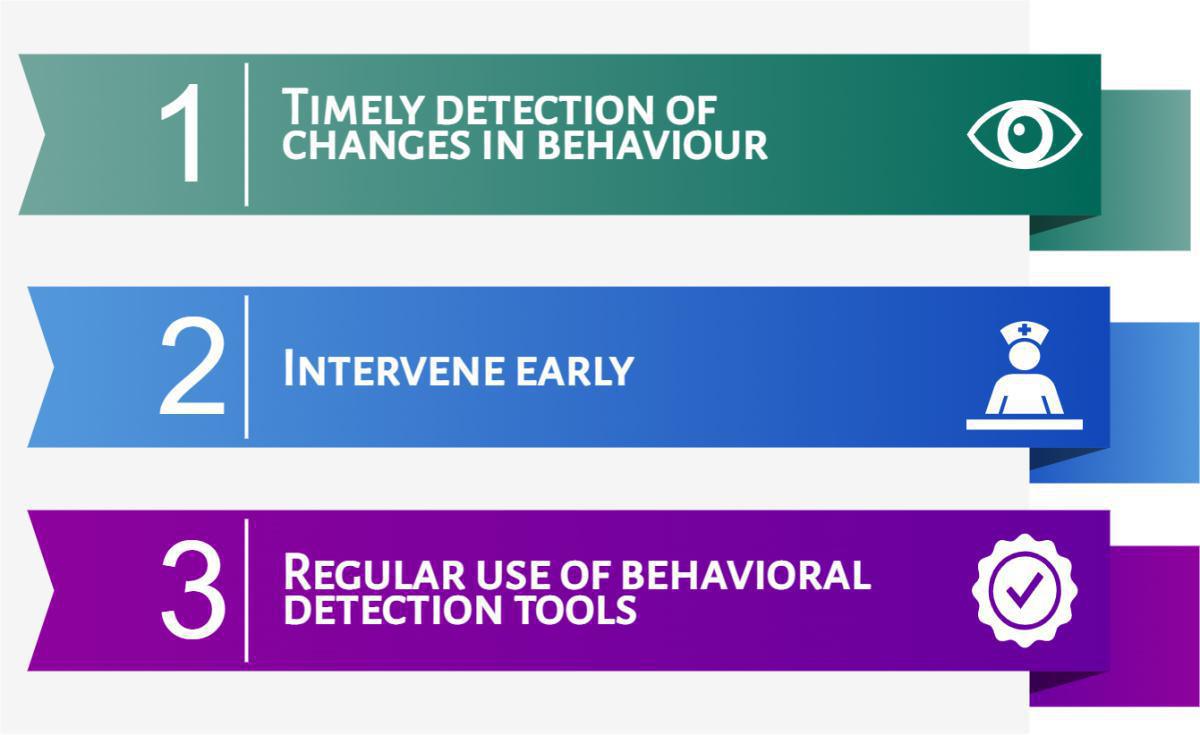Early recognition of changes in behaviour is key to understanding and managing NCSD effectively. Behavioural symptoms are often an expression of unmet needs or underlying issues, rather than simply being a feature of dementia itself.
Key Principles in Recognising NCSD:
- Timely detection of changes in behaviour – Noticing subtle shifts in mood, routine, or interactions can help identify issues before they escalate.
- Intervene early – Addressing behaviours as soon as they arise can prevent distress and reduce the likelihood of escalation. Understanding the root cause is essential.
- Regular use of behavioural detection tools – Structured assessments, observation charts, and caregiver input can help track patterns and triggers.
A Symptom, Not Just a Behaviour
When addressing NCSD, it’s crucial to recognise that behaviour is a symptom of an underlying issue – whether physical discomfort, emotional distress, environmental triggers, or unmet social needs. A person-centred approach, rather than a reactive one, leads to better outcomes for both individuals with dementia and their caregivers.

